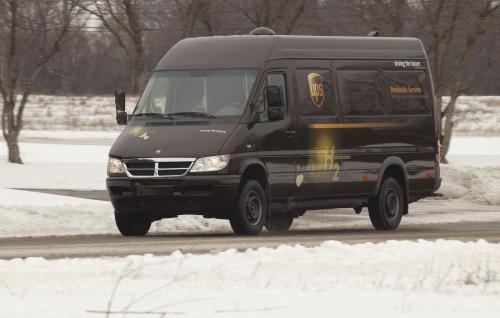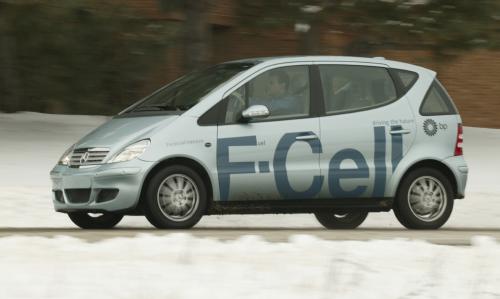Auburn Hills, Mich., Jan 25, 2005 - With winter in full swing, the time and place to test fuel cell vehicles in a cold environment is now Detroit. DaimlerChrysler has fuel cell vehicles operating daily with customers in snowy conditions. One of the environments that the company is currently collecting operational data from is extreme cold.
"We test fuel cell vehicles in three different types of climates and a variety of driving situations in the United States: Northern California, Southern California and the low temperatures found here in the motor city of Detroit," Andreas Schell, Senior Manager - Fuel Cell Systems, DaimlerChrysler. "New technology enables the fuel cell system to continually run in freezing temperatures."
The principle of the fuel cell was discovered in 1839 by the English physicist Sir William Grove. In the fuel cell, a chemical reaction takes place between hydrogen and oxygen, in which electrical energy and heat are released and chemically pure water is produced. The fuel cell has a sandwich-like structure; between two gas-permeable electrodes of graphite paper is an electrolytic plastic foil, the proton exchange membrane (PEM). Since a single cell produces only a very small electrical potential, several cells are connected in series to form a fuel cell stack. The electrical energy generated is used to power the vehicle’s electric motor, as well as supplying the peripheral elements of the fuel cell system.
Part of the 100-plus fuel cell vehicle fleet, the Mercedes-Benz F-Cell and Dodge Fuel Cell Sprinter are well equipped for cold weather. Along with a host of creature comforts is the Electronic Stability Program (ESP). This system works with the Anti-lock Brake System (ABS) to aid the driver in maintaining vehicle directional stability, providing over steer and under steer control to maintain vehicle behavior on a multitude of road surfaces, including ice and snow.
Partnerships are an important part of fuel cell technology development. DaimlerChrysler has the opportunity to share goals with other companies and government entities, such as UPS and the EPA. DaimlerChrysler and BP, partners in the Department of Energy's fuel cell vehicle and infrastructure validation program, recently dedicated the first hydrogen station in the plan. These partnerships and the common goal will propel fuel cell transportation to maturity.
In order to focus expertise and resources, and to press ahead with the development of the fuel cell, DaimlerChrysler has entered into a strategic alliance with Ford Motor Company and the fuel cell specialist Ballard Power Systems. Over the past 10 years, DaimlerChrysler has developed numerous concept vehicles in order to prove out the opportunities presented by this technology.
DaimlerChrysler pioneered fuel cell vehicle technology over 10 years ago. Fuel cells release energy from the reaction of hydrogen with a catalyst and oxygen. This clean technology operates at a high level of efficiency and is true zero emission. Hydrogen-powered fuel cell vehicles emit only pure water vapor as exhaust. Fuel cell vehicles are part of DaimlerChrysler's advanced propulsion technology umbrella, which includes efficient gasoline engines, advanced diesels and hybrid powertrain systems.
©1998-2005 DaimlerChrysler. Alle Rechte vorbehalten.

